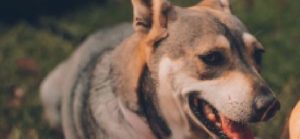 Raising a dog at home may be linked to better cardiovascular health in patients recovering from heart attack or stroke, a study has pointed out. The study, published in the journal Circulation: Cardiovascular Quality and Outcomes, built on previous research demonstrating how social isolation and lack of physical activity can negatively impact heart patients.
Raising a dog at home may be linked to better cardiovascular health in patients recovering from heart attack or stroke, a study has pointed out. The study, published in the journal Circulation: Cardiovascular Quality and Outcomes, built on previous research demonstrating how social isolation and lack of physical activity can negatively impact heart patients.
The researchers from the American Heart Association, sought to find out how dog ownership affected health outcomes based on a large scale analysis of previous studies looking at the relationship.
According to the researchers, dog ownership reduced social isolation, improved physical activity, and even lowered blood pressure, hinting that raising a canine could potentially improve cardiovascular outcomes in patients.
The researchers compared the health outcomes of people who raised dogs, and those that did not after a heart attack or stroke, using health data provided by the Swedish National Patient Register.
The patients studied were Swedish residents of 40-85 years of age, who had experienced heart attack or ischemic stroke some time between 2001-2012, the study noted.
The researchers said that compared to non dog owners, the risk of death for heart patients living alone with a pet dog after hospitalization was 33 per cent lower.
This risk was 15 per cent lower for those living with a partner or child, and a canine, compared to those that did not have a pet dog. Nearly 182,000 people were recorded to have had a heart attack in the study, with almost 6 per cent raising dogs.
The lower risk of death associated with raising dogs could be due to an increase in physical activity, and decreased chances of depression and loneliness, both of which, the researchers said were connected to dog ownership in previous studies.
“We know that social isolation is a strong risk factor for worse health outcomes and premature death. Previous studies have indicated that dog owners experience less social isolation and have more interaction with other people,” said co-author Tove Fall of Uppsala University in Sweden.The study also noted that more research is needed to confirm a cause-effect relationship, and to give recommendations about prescribing dogs as a recovery strategy.
Dogs, meanwhile, too get heart disease, just like their human companions. To be more precise, heart disease in dogs is almost as common as it is in humans, but unlike people, smoking and a fatty diet are not risk factors.
The most common form of heart disease in dogs is valvular disease, which primarily affects small breed dogs over 5 years of age and makes up 70-75% of heart disease in dogs. Heartworm disease causes 13% of heart disease even though it is entirely preventable. Myocardial disease, such as dilated cardiomyopathy, makes up 8% of heart disease and primarily affects large breed dogs of all ages.
The clinical signs of heart disease depend on the type of disease and severity. It is important to note that early on there may be no symptoms at all. As heart disease progresses to congestive heart failure, which occurs when the heart is unable to meet the body’s demands, a dog may develop more obvious symptoms such as fatigue, reduced willingness to walk or exercise, difficulty breathing, loss of appetite, weight loss, a distended abdomen, trouble sleeping or coughing.
Did you know about these behavioural pattern of your dog?
Chasing its tail
Tail-chasing is often playful, especially if your dog is young. Many dogs chase their tails because they’re getting to know their bodies, see it as a chew toy, or because it’s a nervous habit. However, if your dog does it for long periods of time or frequently it can cause an injury or mean something more serious. Take your dog to the vet to get checked out if they’re chasing their tail frequently to rule out a medical issue.
Spinning in Circles
This behavior may seem funny and can sometimes be harmless, but can also be a sign of medical issues, anxiety, or other problems. It’s normal for dogs to circle in their beds or around blankets before sleeping to ensure they’re comfortable (nesting), or spin in circles before going to the bathroom. Visit the vet if your dog spins frequently, particularly if it’s elderly—spinning could mean a memory, hearing, vision, or neurological issue—or if your dog spins in stressful situations, it signals anxiety.
Running around after pooping
There are a few theories about it. Your dog might be marking its territory, as dogs have scent glands in their paws (this also explains kicking after pooping, which many dog owners assume is covering up the mess). Or, it might just feel free and relieved.
Rolling in gross things
It’s happened to a lot of us — enjoying a nice walk with our dogs until we happen upon a pile of something disgusting and they just have to roll in it. What makes a dog want to roll in garbage, poop, or dead animals? Well, like running around after pooping, there are a lot of theories, but none of them are certain. Dogs could be doing it to mask their scent or because what smells terrible to us might smell good to them.
Digging holes
You spend a lot of time maintaining your lawn, only to go outside and find your dog halfway into a crater they’ve been digging. It might be frustrating for you, but for them, it’s perfectly natural. They might simply be following their instincts or denning, a behavior common in breeds such as Huskies.
Digging holes can also result from wanting to escape the yard or something they fear, hearing moles or bugs under the ground (if your dog is digging holes in random parts of your yard, this might be the case), wanting to cool off in hot weather, or wanting to stash away food or treats. Read other common reasons dogs dig here. In some cases, dogs might be missing key minerals in their diet and may be seeking it from the soil, which brings us to…
Eating dirt
It’s common for dogs to eat dirt every once in a while — it’s a way of exploring their surroundings, especially if they’re digging holes. In rare cases, it could mean your dog is anemic or has pica, an eating disorder in which animals are compelled to eat things that aren’t food (such as paper, grass, or even rocks).
Pica can develop for many reasons, from boredom to thyroid conditions to nutritional imbalances. Boredom causes dogs to seek an outlet for excess energy, and nutritional imbalances can result from a lack of digestive enzymes, difficulties with digestion, or a diet that doesn’t include enough essential nutrients. If you notice your dog compulsively eating dirt (or anything else that isn’t their food), talk to your vet to determine whether there’s an underlying health issue.
Licking or biting paws
Like many behaviors, licking paws can be normal. Nonstop licking or chewing on paws to the point of red spots, though, is cause for concern. These behaviors result from a wide variety of causes — they could mean boredom, anxiety, dry skin, pain or arthritis, or allergies. Licking dry skin is a dog’s attempt at reliving the dryness. Allergies or an injury could be causing discomfort or itchy skin, causing dogs to react by licking. Since there are so many potential causes of compulsive licking or chewing, be sure to check with your vet once you notice it.
letters@tehelka.com













